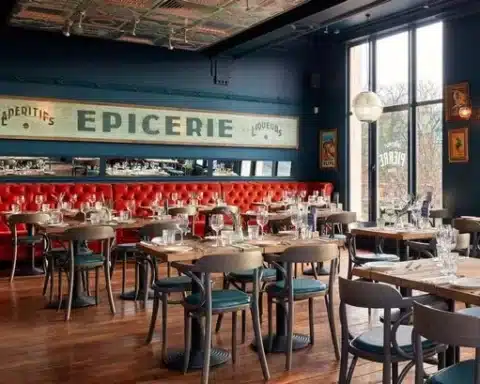Ground breaking research is underway at Edge Hill University’s Medical School to see if training medical professionals in a fully immersive, mixed reality environment can improve their ability to deliver lifesaving operations.
The University is working with its partner, Aintree University Hospital NHS Foundation Trust, in the new research which will assess the impact of simulated environments on trainee anaesthetists.
Using Edge Hill’s CAVE (the UK’s first super immersive 3D virtual environment), anaesthetists have been asked to perform a tricky procedure involving cutting open a manikin’s neck to insert a tracheostomy tube in two different audio-visual scenarios.
Students from Edge Hill’s Media and Film Department visited Aintree Hospital to film the two scenarios to be projected in the CAVE; a major trauma bay from Aintree’s Urgent Care and Trauma Centre and a smaller anaesthetic room.
Under the guidance of Dr Peter Groom, a Consultant Anaesthetist at Aintree Hospital, the trainee’s performance and how ‘real’ they felt the scenarios were will be compared across the two simulated environments.
The more challenging scenario sees trainees operate on a simulated emergency trauma patient within a major trauma bay while the second typically less stressful scenario sees trainees working in the anaesthetic room treating a patient undergoing elective surgery.
Edge Hill’s Professor of Medical Education John Sandars who is carrying out the research, said: “A major international priority for improving anaesthetic patient safety is managing acute airway difficulties.
“This involves anaesthetists obtaining emergency front of neck access in a procedure which we know many are reluctant to perform and trainees have concerns over their ability to perform.
“A major advantage of using a simulated environment is that training can be delivered in a controlled manner with different levels of challenge.
“Scenarios can be chosen that evoke different reactions and responses (related to technical and non-technical skills) that are like those evoked in the ‘real’ world.
“Technical skills are their ability to carry out the procedure effectively, whereas non-technical skills such as anxiety can affect performance.
“We know that trainee’s typically feel more comfortable performing this procedure in the bigger operating theatre environment rather than the smaller more claustrophobic theatre bay environment.
“By using the CAVE, we can create these two scenarios to give the trainees the practice they need and we can measure their technical and non-technical skills.
“Ultimately we want to identify the usefulness of using this simulation environment to create a sense of realism and immersion for training from the perspective of both the trainee and the trainer.”
Aintree Hospital’s consultant anaesthetist, Dr Peter Groom, who designed the simulations said: “Using simulation to rehearse the management of patients with an obstructed airway is the best way for anaesthetists to gain confidence in themselves to handle an emergency that may only happen once in their career.
“This emergency is time critical; requiring fast and decisive action taken over a minute or so to save a patient’s life.
“In situ simulation is the best way to do this but is hard to arrange in the hospital because these enviroments are obviously in use all the time, with staff caring for real patients.
“The CAVE allows use to recreate the hospitals environment with stunning fidelity on the Edge Hill campus; it’s unbelievably real to experience.”
Trainer Tamryn Miller, an ST7 Anaesthetist, said: “Carrying out this procedure is a rare event but it’s something all anaesthetists need to feel confident in performing.
“This environment is fantastic as we can’t carry out training in a real operating theatre or theatre bay environment.
“We can deliver the training in a realistic environment that feels like home, it looks like the hospital and because we bring our own equipment it feels like we’re at work.”
Trainee Alison Evans a ST5 Registrar Anaesthetist, said: “The simulation feels so more realistic. I’m used to working in the major trauma bay and the bin is in exactly the right place and I expected to look up and see a colleague walking by.
“It’s so immersive, when you’re training in a classroom you glance up and instantly know you’re in a classroom but here as I glanced up it felt so real.”
Professor Sandars and his team will use the qualitative data from this feasibility study to see if a wider pilot study can be carried out to access the role of simulation training of patient management in healthcare.
The research is supported by a £5,000 award from Edge Hill’s Impact and Knowledge Exchange Fund.












OTS News on Social Media